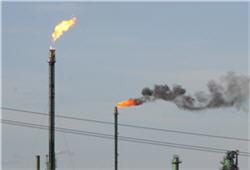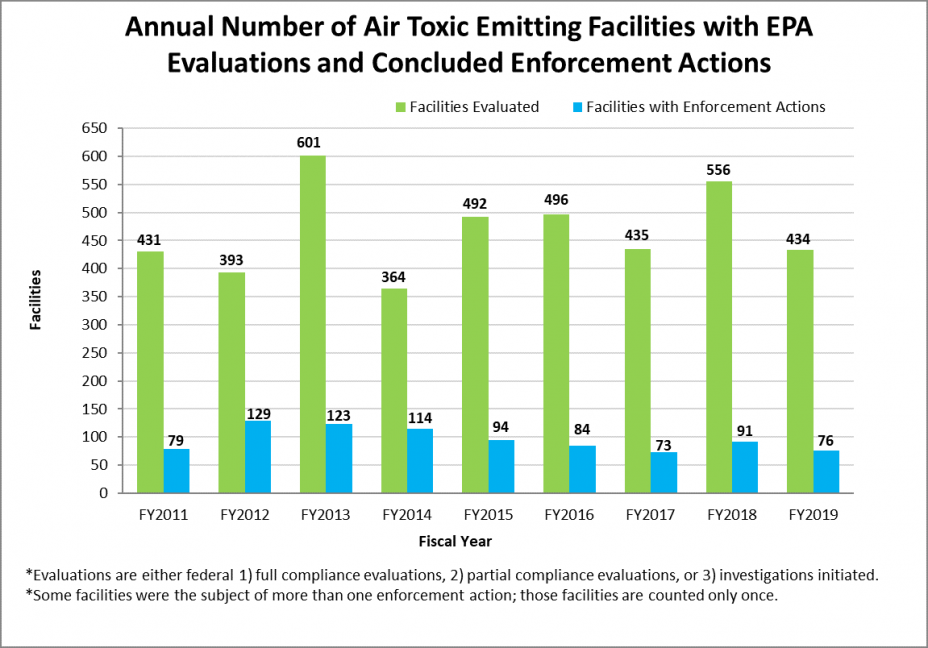Former National Compliance Initiative: Cutting Hazardous Air Pollutants
This NCI was superseded by a new NCI in FY 2020 called Creating Cleaner Air for Communities by Reducing Excess Emissions of Harmful Pollutants that will focus on reducing hazardous air pollutants and volatile organic compounds.
 Air pollution from an improperly operated flare
Air pollution from an improperly operated flareProblem
People living in non-attainment areas or in communities that are near sources of hazardous air pollutants (HAPs) may face significant risks to their health and environment. HAPs are pollutants that are known or suspected to cause cancer or other serious health effects. In some instances, small amounts of these chemicals inhaled or ingested can cause serious illness. There are over 180 chemicals that the EPA has identified as HAPs, including mercury, benzene, dioxin, and lead compounds. Furthermore, significant sources of volatile organic compounds (VOCs) contribute to non-attainment with the National Ambient Air Quality Standards (NAAQS) or may adversely affect the attainment status of an area. VOCs are a key component in the formation of ground-level ozone (a constituent of photochemical smog) and secondary organic aerosols, both of which may impact ecosystems and can cause adverse health effects like respiratory ailments. Many individual VOCs also are known to be harmful to human health.
Goal
This NCI addressed the adverse health and environmental effects from exceedances of the NAAQS to which sources of VOCs contribute, as well as VOC- and HAP-related health impacts on communities.
Results
The following maps and charts show the EPA’s actions in targeting and reducing emissions of hazardous air pollutants through the end of FY 2019 under the FY 2017-2019 Cutting Hazardous Air Pollutants NCI
Map of air toxics enforcement actions

